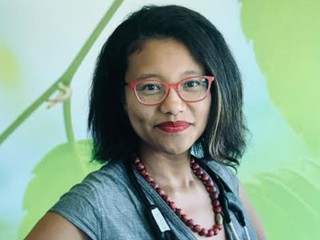Oxford Cancer Analytics raises $11M to detect lung cancer via a blood test
OXcan combines proteomics and artificial intelligence for early detection
Read more...
While there are plenty of new startups emerging to disrupt primary care, the idea is still pretty new. In fact, many of these companies have been founded in the last 5-10 years, meaning it's not entirely clear yet how this will all shake out, and what primary care will look like when all is said and done.
For example, with the rise of on-demand care, a la Doctor on Demand, can we really have that traditional doctor-patient relationship when your doctor might not be available at your command?
Today, the primary care doctor, unlike an urgent care doctor or a specialist, typically acts as the gateway: they are the person the patient comes to when they initially want to know what's wrong with them. That means patients often want to find someone they feel comfortable with, and who they know they can trust; studies have shown that patients are willing to wait longer to see a doctor they are familiar with, as long as the problem is not urgent. Not only that, but they've also shown that continuity of care actually improves health outcomes.
(Vator and UCSF Health Hub are teaming up for a virtual event on November 17 called "Primary Care and the New Medical QB," in which we will be talking to various stakeholders in the healthcare system, including providers, patients, and startups, about this change)
Some might say that such a notion is becoming outdated, and that it seems to matter less and less to each successive generation: while 84% of Boomers have a primary care physician (PCP), that's true of 67% of Millennials, and only 55% of Gen Zers. Those numbers may not tell the whole story, of course, since the numbers might simply be lower simply due to age; obviously, someone in their 20s doesn't need to see a doctor anywhere near as often as someone in their 70s. When Gen Z eventually becomes the old generation, it might not be surprising to see the numbers be closer to what they are for the Boomers.
To be sure, more than 70% of Americans had primary care doctors in the early aughts vs 64% in 2015. If there's no longer a primary care physician needed, who will be the front door to someone's healthcare journey?
In trying to understand this, we asked many of the emerging telehealth and primary care disruptors offering on-demand access whether they're recreating the primary care physician or establishing them as the traditional gateway. Turns out, most of them are.
Amwell, for example, strongly encourages its patients to choose a single online primary care provider that they will then follow-up with for ongoing care.
"The fundamental principles undergirding virtual primary care are the same as those in brick-and-mortar practices: namely, patients should be able to access evidence-based, high quality healthcare through an ongoing relationship with a well-trained doctor who knows them," Dr. Cynthia Horner, Medical Director at Amwell Medical Group, told me.
For the company, providing primary care is actually a more recent development, and really only came about because of the pandemic; prior to 2019, most telehealth visits on Amwell were for urgent care needs, such as colds, sinusitis, allergies, bladder infections, and rashes.
"As the COVID pandemic shuttered brick and mortar practices, many patients sought care for chronic diseases online, and many clinicians pivoted to adding telehealth services to their practices. With endorsements from professional medical societies and regulatory support from CMS both patients and clinicians are pivoting to use telehealth as an efficient and effective way to manage chronic diseases," Horner explained.
On MDLIVE, meanwhile, patients have the opportunity to select their own provider based on their own preferences: providers can be designated as favorites so the user can easily find them again, or they can search for providers based on availability.
In addition to primary care, MDLIVE also provides urgent care and behavioral health services, and the company has found that provider continuity is more important to patients using telehealth for primary care and behavioral health than it is for urgent care, where most people just see the first available provider. That being said, some do schedule an appointment with a preferred urgent care provider.
One company that provides both in-person and virtual primary care is Parsley Health, though it provides care through a monthly membership fee. Patients are able to choose their doctor and health coach, both of whom they will have an on-going relationship with when they sign up, based on who is accredited in their state. Patients get access to five doctors visits, totaling three hours of patient-doctor time, and five health coach visits per year.
Patients can change their doctor pairing on request, if schedules don't align, for example, but the model is focused on building those relationships, rather than offering one-off visits.
Maven Clinic, a digital clinic that is focused on women and families, takes a similar approach to Parsley: every Maven member gets a care team comprised of a range of providers who can help meet their needs.
For example, a member in their third trimester of pregnancy may get a care team that consists of an OB-GYN, a nutritionist, a pelvic floor physical therapist, a lactation consultant, and a mental health provider. And many members will stick with the same care team and provider for the long term.
The same goes for Doctor On Demand. Members can review clinician profiles and select the doctor they would like to have as their primary care doctor, but the company will also provide a recommendation based on its matching algorithm. Members are allowed to override or request the soonest available clinician.
In addition, the company also treats behavioral health needs, and those are becoming increasingly popular on the platformm Ian Tong, Chief Medical Officer at Doctor On Demand, told me.
"A growing percentage of patients use our services for traditional primary care chronic conditions and behavioral health. We published a paper on this last year in JMIR with Ateev Mehrotra and Lori Uscher-Pines from Harvard and Rand. When we assess just the primary care practice members most visits are for primary care conditions and three to four of top 10 diagnoses are behavioral health related," he said.
It's the patients being seen for behavioral health conditions who most want to see the same doctor, Tong noted. And the same is even happening in urgent care: even prior to COVID, even one out of three patients with urgent care related conditions preferred to see the same doctor, rather than the soonest available doctor.
"This data is consistent with another paper we published last year in Mayo Clinic Proceedings Quality, Outcomes and Innovation journal. That descriptive study showed patients identified establishing rapport as the most valuable result of the typical urgent care visit. Second highest value was placed on Sharing Information. We see both of these as core competencies in relationship and trust building that are critical to primary care delivery and sustainable outcomes."
Not all companies take the approach of letting the patient pick their own doctor, instead opting to make an initial match in the hopes of establishing a long-term relationship.
98point6, a text-based primary care app that covers everything from diseases of the respiratory system and skin to infectious/parasitic diseases to mental/behavioral health disorders, takes this track.
When patients first start using the service, they are paired with the first available physician licensed in their state and don't need to select a doctor in order to access the service. Once the patient has begun their visit, they have access to the doctor’s profile information including photograph, medical school, years of practice and medical license number. If a member would like to switch to another provider for any reason, they can do so at any time during the visit.
The company uses data to get to know each patient and their medical history, so every time a patient interacts with 98point6 they're speaking to the same service, making it feel like there's continuity of care. On top of that, the patient’s visit history and medical history are made available to the physician who can read the entire chat transcript from previous visits, allowing them to pick up exactly where the last visit ended.
CirrusMD, which is also a text-based app, also assigns patients automatically to the next available, appropriate provider as they come on to the system, meaning new patients don't get to choose their providers. The reasoning behind this is that it keeps response times low, typically under 60 seconds, Patrick Hurley, the company's VP of Growth Marketing, explained.
However, after patients are initially seen and evaluated, if it's determined to clinically necessary (or if a patient requests it), they can be assigned to the company's followup Primary Care & Specialty Clinic for further visits for a variety of issues, for example medication tolerance, therapeutic response, or chronic issues where they are followed by a team of primary care providers. Patients have the option of coming back during that clinician’s individual clinic hours, or can come in anytime; the patient chooses, depending on what works for their schedule.
When it comes to seeing the same doctor, though, that's not a priority for most patients, according to Hurley.
"It varies, but for the most part, our experience with over a million chats on our system has led us to the conclusion that the patients that are choosing to seek their care over our telehealth system are less interested in having the same doctor, and more interested in the quality, responsiveness, human-conversation, and convenience that our system affords."
In fact, the interactions on Heal usually start with an emergency, such as high fever, and a patient who can't see their normal primary care doctor. After that, they often begin using it for primary care as well.
All of these companies at least give patients the option to see the same doctor again, if they choose to; one of the few emerging primary care companies to not take an approach where patients can establish that ongoing relationship is K Health.
In their case, a user's doctor is assigned to each individual case based on availability of doctors in that state, at that time. K is able to see users within minutes, and in order to make that happen, the first available doctor is assigned to see the user.
"Users prefer quick availability from doctors, but because each user has a medical profile, the doctor can see past treatment and ensure continuity of care for the next doctor," the company told me.
(Image source: medicaleconomics.com)
OXcan combines proteomics and artificial intelligence for early detection
Read more...Nearly $265B in claims are denied every year because of the way they're coded
Read more...Most expect to see revenue rise, while also embracing technologies like generative AI
Read more...
